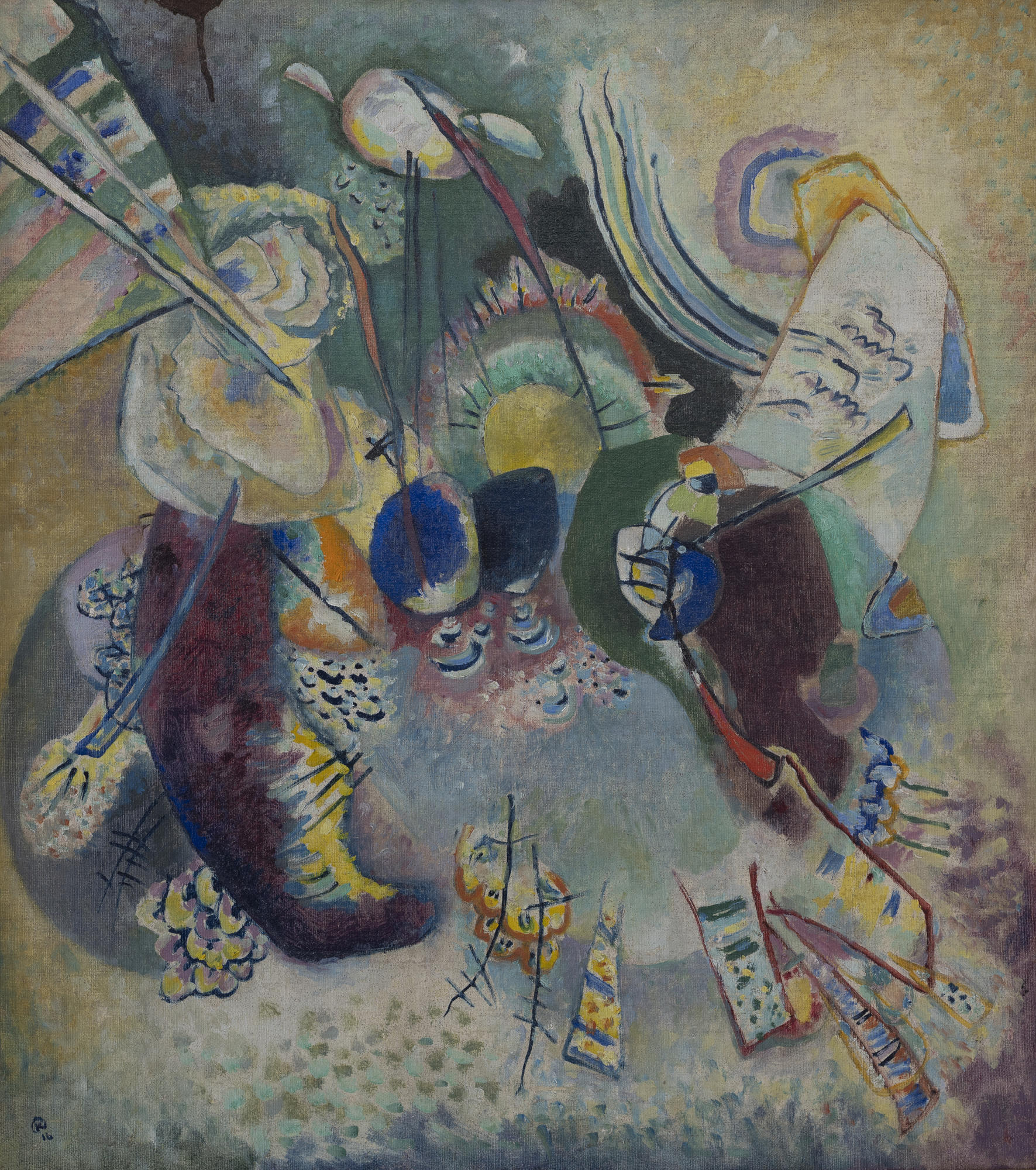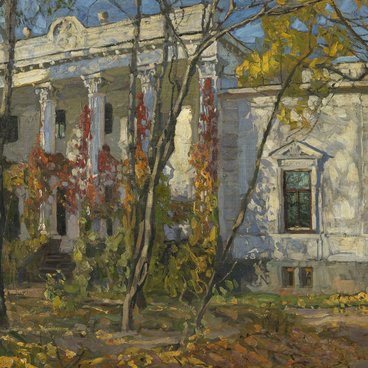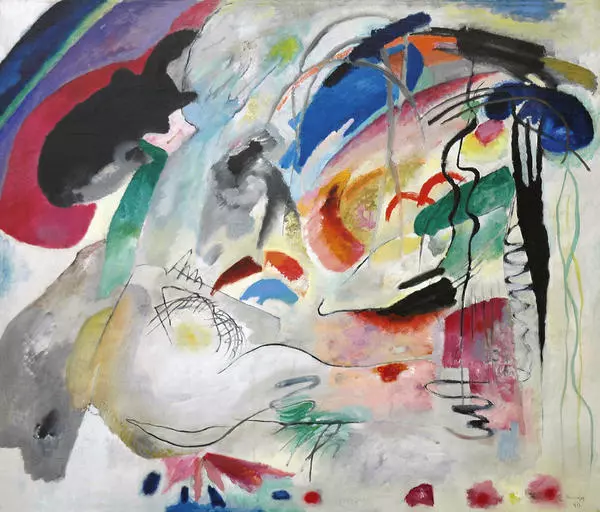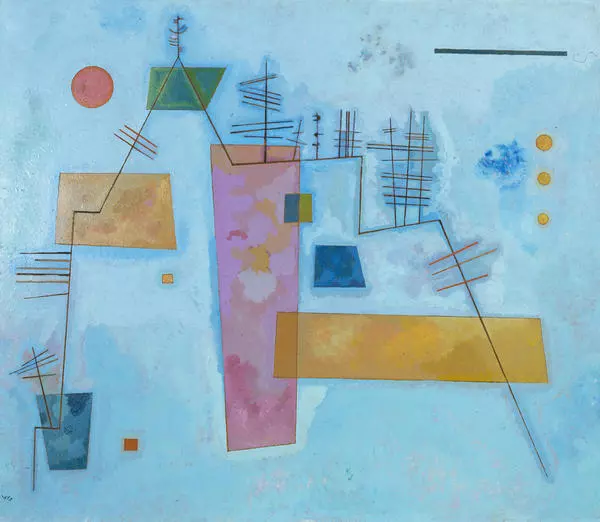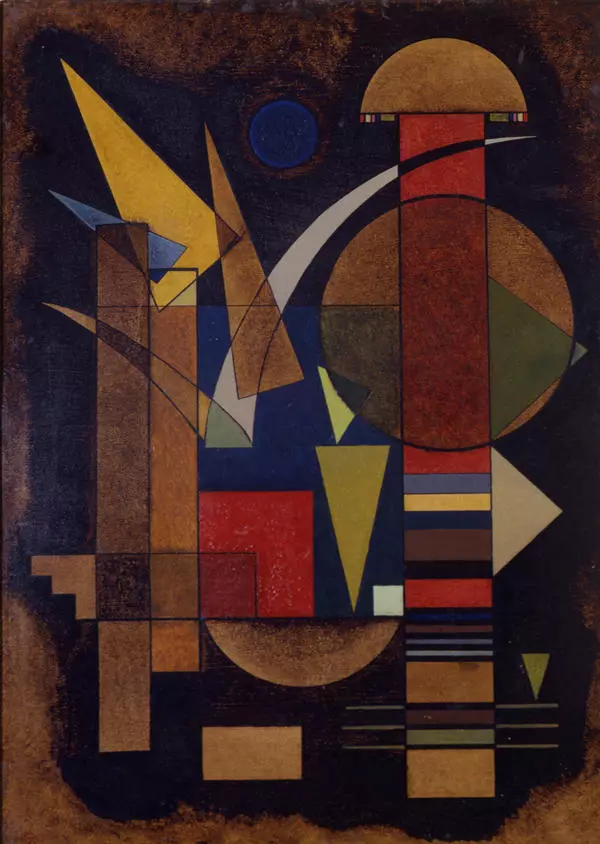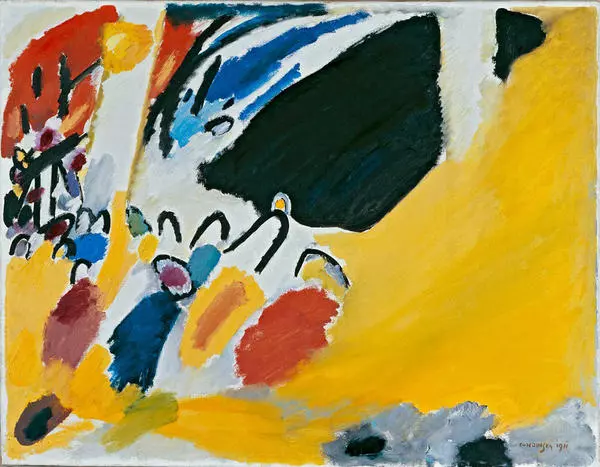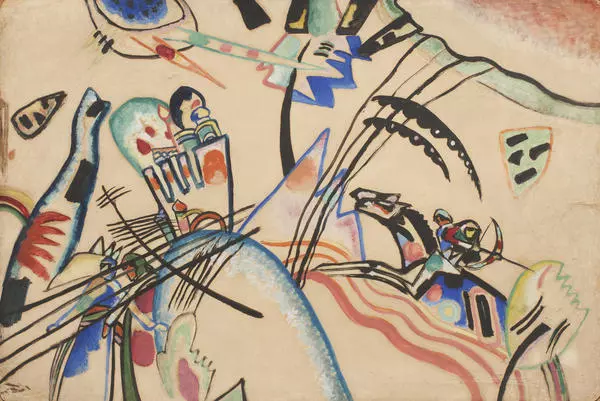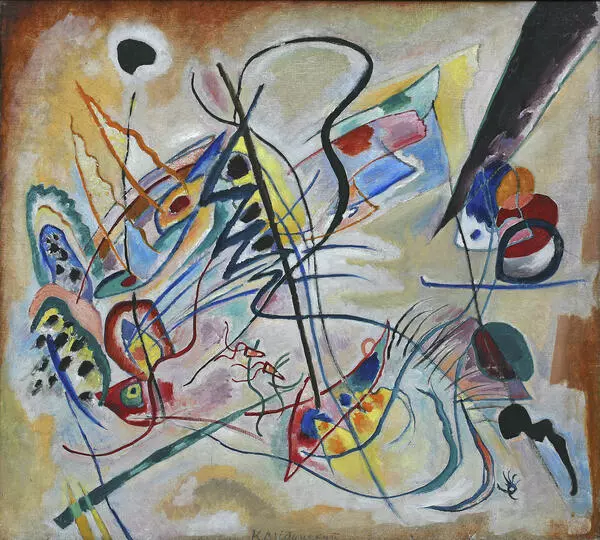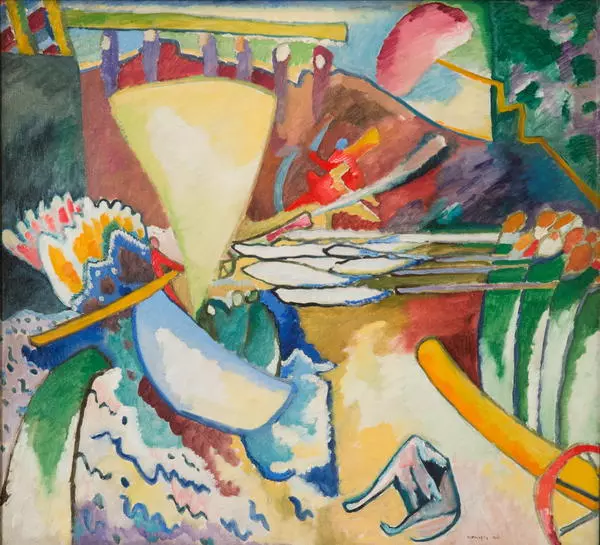Comprehension of mystery of art, process and meaning of a creative act became a lifework for Vasily Vasilyevich Kandinsky, a painter — innovator, theoretician, philosopher. He denied objectivity in the painting, trying to express ‘subtle matter’, emotional state through the language of painting. On his way to this goal the so-called improvisations of the painter appeared. But compositions were peaks of his creative efforts. From the very beginning even one word composition sounded to me like a prayer’. According to the painter’s words, improvisation is a fruit of intuition, expression of inner processes of the unconscious, impression of ‘inner nature’, reaction to the world around, and composition is a thorough construction on basis of preparatory studies, a planned and rationally structured picture, in the creation of which ‘mind, consciousness, intention, practicability play a leading role, but a feeling and not calculation is of a crucial importance’. V. Kandinsky’s painting from the art collection of Tyumen Museum and Educational Society is an example of “colour and sound” composition, bearing plenty of associations. According to one of the versions, the original idea of its creation came from the plot of the Old Testament about the Deluge.
More than once the painter referred to this plot and tried to convert into abstract forms not the external impression of the Deluge, but its “inner sounding”. The reproduction of apocalyptic motives is a frequent theme of Kandinsky compositions because the idea of a global catastrophe as of a sin offering, which allows the humankind to transfer to the “kingdom of spiritual values” was close to the painter. But during any attempt to interpret the master’s works the words of Kandinsky himself should be remembered:
